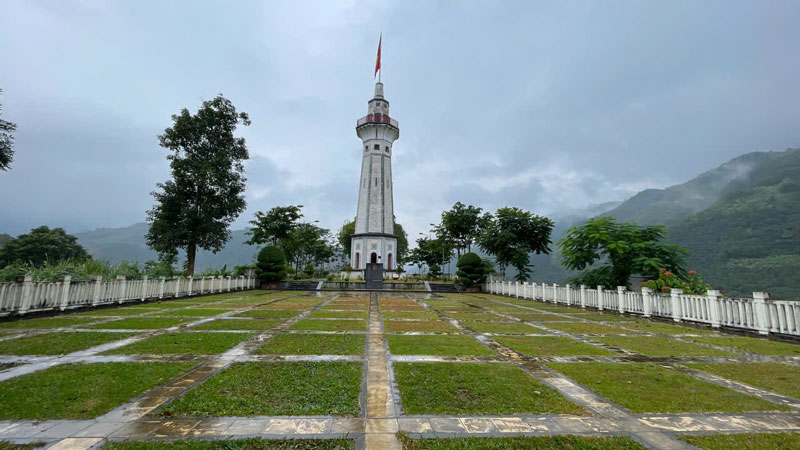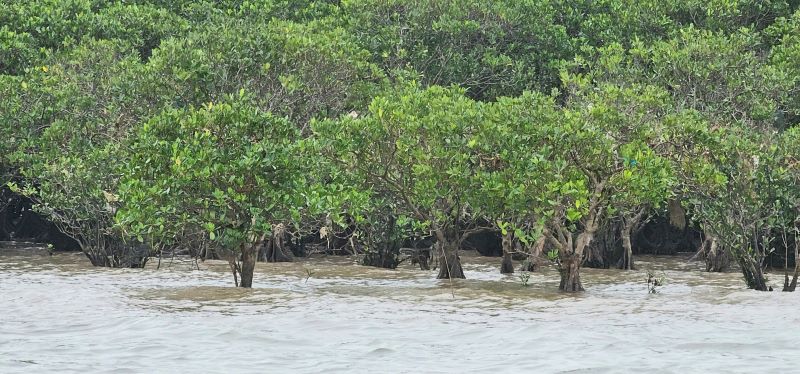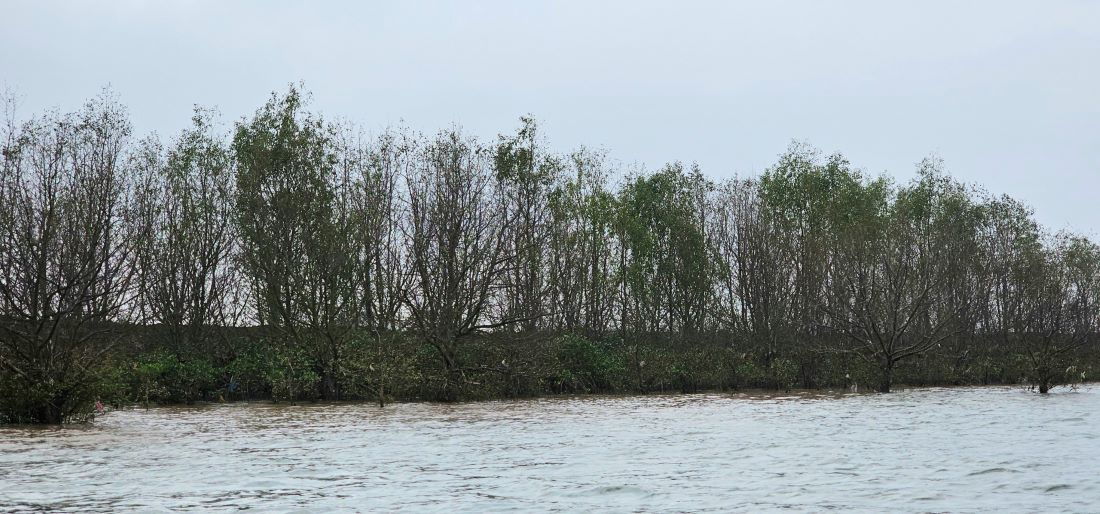Where the Red River flows into Vietnam
On the morning of February in the border area of Lao Cai, we stood still at the foot of Lung Po flagpole (A Mu Sung commune, Bat Xat district), despite the cold winds sweeping through our youthful hair, our hearts recall the people who lived, fought, contributed and fell down to the Fatherland.
This is also the place where the Red River winds its way across the border, carrying the alluvium of upstream Tibet, starting the journey through Vietnam, quietly witnessing the ups and downs of history.
And it is also here, 46 years ago, that the footsteps of young soldiers who advanced to protect the border in the fierce border protection war were imprinted.
In February 1979, Lao Cai town was severely damaged. Standing on this side of the river, war reporter Duong Soai of Hoang Lien Son Radio felt the brave examples and the indomitable beauty of the soldiers in the fierce struggle.
During those days, soldiers still wrote letters to their homeland, the letters sometimes had not yet had the stamp, did not have a clear address, but contained a wholehearted remembrance.
The poem "Gui em dep dap dong" was composed by Duong Soai on February 20, 1979, when the war to protect the northern border took place for 3 days.

From Lung Po, the Red River is not only a natural boundary but also a witness to the war of national defense. That is where the soldiers fell to preserve the border, where the letters were written hastily but filled with the belief of victory.
Duong Soai's poem with rustic words is not only a literary work but also a message from the soldiers on the border. In 1980, musician Thuan Yen accidentally read the song "Gui em da dong dong Hong". He set the poem to music, becoming a famous song.
Poet Duong Soai once said that the letters sent from the front were mostly directed to the rural areas along the Red River: Thai Binh, Nam Dinh, Hanoi, Ha Nam... At that time, the Red River was not only a river, but also a blood vessel connecting the front line, connecting children far from home with their homeland.
Where the Red River flows into the sea
Along a length of 556km in Vietnam, the Red River ends its journey at Cua Ba Lat, where the Red River joins the East Sea.
Ba Lat Gate is located between Nam Dinh and Thai Binh, where there are long mangrove forests, protecting the ecosystem and is also the end point of the red river.
46 years after the war, we once again return to this river mouth, where ancient letters have returned to relatives.


Here, mangrove forests are still green, and migratory birds are still flying to healthy areas.
But in the memories of the elderly, they still remember the spring without relatives returning. There are letters that have returned to their homeland, but the soldiers who write letters will forever be left in the remote border.
At the end of the river, the lyrics are sung:
He is at the border, where the Red River flows into Vietnam
In his place, the sky is blue...
In my hometown, the riverbank is laboring...
That lyrics are not only nostalgic, but also a reminder of a time of fireworks. The river still flows, the memories are still there, and the spirit of defending the country of the soldiers of old is still an undying lesson.
February 17, 1979, is not only a historical milestone, but also a story of an entire generation that stood up to protect the country. The Red River flows across the border, through the countryside, carrying silt and silt, but also carries stories about the time of fire and smoke.
From Lung Po to Cua Ba Lat, from where the Red River flows into Vietnam to where it joins the East Sea, the river of love has witnessed many changes in the country. But one thing remains unchanged - that is the indomitable spirit of those who fought and sacrificed to protect each piece of homeland.











